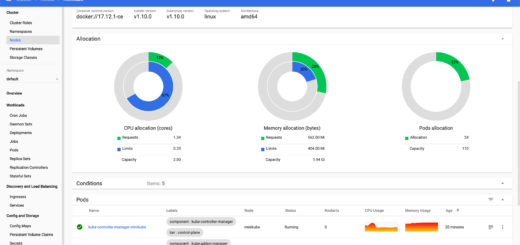OpenStack use cases and tips

OpenStack is probably one of the most fast-growing project in the history of Open Source and as such it is prone to be obfuscated by its shininess. Understanding when and even IF to employ a solution or another is key to successful business.
Why OpenStack?
If by any case you stumbled here without knowing what OpenStack is I highly suggest you to get a glance of OpenStack before proceeding in reading this article. That said, there are two ways of using OpenStack: through a provider or hosting it. In this article I’ll discuss on the use of OpenStack to manage infrastructure and avoid application management purposely (it is a way too broad topic to merge it with this one). Before we dive in the argument let’s summarize the advantages and the disadvantages of OpenStack:
Pros:
- It can easily scale across multiple nodes.
- It is easily manageable and provides useful statistics.
- It can include different hypervisors.
- It is vendor-free hence no vendor lock-in.
- Has multiple interfaces: Web, CLI and REST.
- It is modular: you can add or remove components you don’t need.
- Components like Sahara, Ironic and Magnum can literally revolutionize your workflow.
- It can be employed over an existing virtualized environment.
Cons:
- Installation and upgrades are literally barriers. (If you’re not using tools like RDO.)
- It can break easily if not managed correctly.
- Lacks of skills in the staff is a major issue.
- Can become overkill for small projects.
Hypothetical use cases
Case 1: University
The reality universities face is ever-changing and providing a stable solution to host services can sometimes become a difficult task. In a small university OpenStack is almost not needed, and employing it is overkill, but in a large university the use of OpenStack can be justified by the enormous amount of hardware resources employed in order to provide services to its students. In this scenario the use of OpenStack simplifies the management of internal services and also improve security by providing isolation (achieved by virtualization). In case the university has multiple locations over a geographical region, centralizing hardware resources in the principal location reduces the number of machines needed and the cost of maintenance allowing a more flexible approach. OpenStack helps in this case only if the university is large enough and/or has multiple locations.
Case 2: IT School
This case is probably a must if the IT team is skilled enough. Employing OpenStack in a IT School gives enormous flexibility both to its students and to its IT team. An OpenStack deployment could be easily configured to use LDAP and provide students with their own lab. Using a large central cluster could also replace the need of desktop machines (to be replaced with thin-clients), this would achieve an easier maintenance and could potentially improve the security (many schools use outdated software because of the absence of update plans). If thin-clients are not a choice OpenStack Ironic could provide an easy way to provision bare metal machines. Of course the use of OS is only indicated if the school is large enough and has enough machines, but usually IT schools tend to have lots of machines and older hardware.
Case 3: IT Small-Medium Business / Enterprise
Depending on the true nature of the SMB/Enterprise OpenStack can become a key to a successful business. Enterprises are the primary OpenStack field but when should you deploy it in SMBs? The first answer is when you expect growth. If you know the workload in a year will double you will surely need to address this problem. OpenStack innate ability to scale out will enable the SMB to scale at will and avoid overbuying. A big data company could benefit from Sahara which combines the power of Hadoop/Spark with the flexibility of OpenStack. For the most adventurous there’s also containerization with the Magnum component enabling the use of Docker and Kubernetes (which is not included in the actual release but will be in the next one). OpenStack is surely a great way to start hosting your SMB/Enterprise cloud, but it can also prove difficult to manage it; skill availability can become a major issue. Also, migrating from an existing virtualized environment might be difficult depending on the case.
Conclusions
As you can see OpenStack can become your best friend if you know how to use it. However the installation is the hardest barrier in the first place, and in enterprises migrating from an existing environment to OpenStack can be a challenge. The second problem is the lack of skills needed in order to install and manage the system. But if you’ve got both problems solved you can experience a boost in flexibility and a reduction in costs that you could never expect. If the project is big enough and you haven’t already started, OpenStack can look difficult from the outside but will pay better in the long run.
- 2020 A year in review for Marksei.com - 30 December 2020
- Red Hat pulls the kill switch on CentOS - 16 December 2020
- OpenZFS 2.0 released: unified ZFS for Linux and BSD - 9 December 2020









Recent Comments